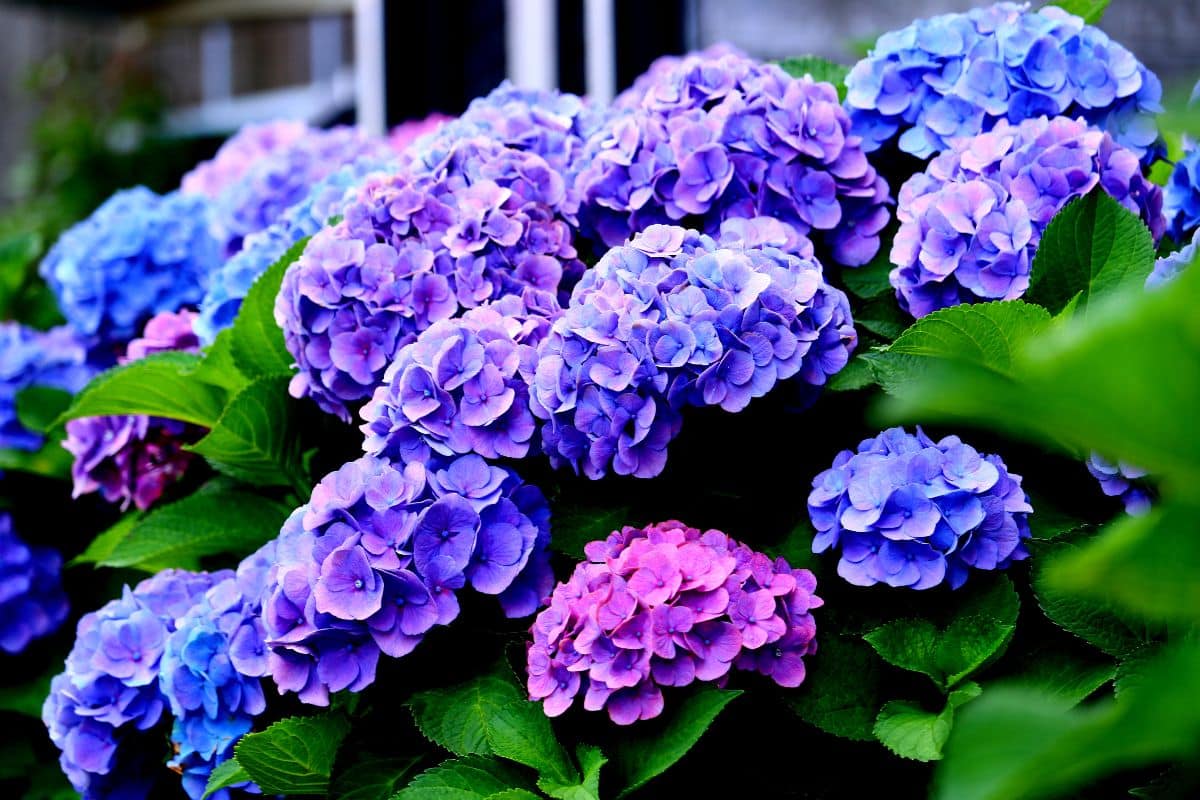Coffee grounds aren’t just for brewing your morning cup of joe – they can transform your garden’s star performers. Hydrangeas captivate gardeners with their showstopping blooms, but achieving those vivid blue flowers many covet requires understanding the science behind their coloration. The secret lies in soil chemistry and a common kitchen ingredient that might surprise you.
Transform your hydrangeas with coffee grounds
Hydrangeas rank among the most beloved flowering shrubs in gardens worldwide, celebrated for their spectacular blooms that typically appear from mid-spring through late summer. Unlike most flowering plants, hydrangeas possess a remarkable quality – their flower color can change based on soil conditions. This characteristic makes them uniquely adaptable to gardener preferences.
The vibrant blue hues many gardeners desire depend entirely on soil acidity. Coffee grounds work wonders for hydrangeas because they naturally increase soil acidity, creating the perfect environment for those striking blue blooms. Putting coffee grounds in your hydrangeas to boost their flowering serves a dual purpose – enhancing bloom color while providing beneficial nutrients.
According to the Royal Horticultural Society (RHS), soil pH fundamentally determines hydrangea flower color. When hydrangeas grow in acidic soil with a pH below 5.5, they develop intense blue flowers. Conversely, alkaline soils with pH levels above 6.5 produce pink blooms. This scientific relationship between soil chemistry and flower pigmentation gives gardeners remarkable control over their hydrangea display.
The magic happens because acidic soil conditions make aluminum more available to hydrangea plants. Aluminum uptake is what creates the stunning blue pigmentation in the flowers. Without sufficient acidity, the plants cannot access this crucial element, resulting in pink blooms regardless of variety.
Science behind blue hydrangea blooms
The color-changing ability of hydrangeas relates directly to their interaction with aluminum in the soil. Unlike other garden transformations, such as replacing grass with clover for sustainability, changing hydrangea color requires chemical understanding.
When soil becomes more acidic, aluminum becomes more soluble and available for plant uptake. Hydrangeas that absorb sufficient aluminum develop blue pigmentation in their flowers. This scientific principle explains why gardeners seeking blue blooms must focus on increasing soil acidity.
Coffee grounds work effectively because they typically have a pH between 4.5 and 5.0, making them sufficiently acidic to influence soil chemistry. They also contain several nutrients beneficial to plant growth, including :
- Nitrogen, which promotes leafy growth
- Phosphorus, essential for root development
- Potassium, which enhances flowering
- Trace minerals that support overall plant health
For gardeners dealing with particularly stubborn soil conditions, adding aluminum sulfate alongside coffee grounds can accelerate the soil acidification process. This combination creates optimal conditions for vibrant blue hydrangea flowers by simultaneously lowering pH and increasing aluminum availability.
Understanding plant nutrient requirements becomes crucial when diagnosing various garden issues. For instance, knowing why gardenia leaves turn yellow involves similar soil chemistry principles that affect hydrangeas.
Proper application techniques for optimal results
Applying coffee grounds correctly maximizes their effectiveness while preventing potential problems. Begin by collecting used coffee grounds and allowing them to dry slightly to prevent mold growth. This simple preparation step ensures the grounds benefit rather than harm your plants.
When applying coffee grounds to hydrangeas, sprinkle them around the plant’s drip line rather than directly against the stems. Direct contact with plant stems can cause moisture retention issues and potentially lead to rot or fungal problems. Maintaining approximately 2-3 inches of distance from stems provides optimal nutrient delivery without risking plant health.
Gently work the coffee grounds into the top 1-2 inches of soil using a garden fork or small trowel. This incorporation helps prevent the grounds from forming a water-repellent crust on the soil surface while accelerating their breakdown and nutrient release.
Patience proves essential when using natural methods to alter hydrangea color. The transformation process typically requires several months as soil chemistry gradually changes. For best results, begin applications in early spring before flowering begins. Similar to how oriental lilies return annually with proper care, hydrangeas reward consistent attention.
Many gardeners find that composting coffee grounds before application provides even better results. This pre-processing helps neutralize some of the compounds in fresh grounds that might inhibit seed germination while preserving the beneficial acidity.
Best practices for healthy blue hydrangeas
While coffee grounds effectively influence hydrangea color, moderation remains key. Excessive application can create overly acidic conditions that damage plant roots and disrupt beneficial soil microorganisms. Limit applications to once monthly during the growing season to avoid potential problems.
Understanding your regional growing conditions significantly impacts gardening success. Just as knowing Colorado’s planting zone helps gardeners there select appropriate plants, recognizing your local soil type affects hydrangea care strategies.
Complementary practices enhance coffee ground effectiveness. Mulching with pine needles or bark provides additional acidity while conserving soil moisture. Regular watering prevents soil from becoming too dry, which can concentrate acidity to harmful levels.
Remember that not all hydrangea varieties respond equally to soil pH adjustments. The macrophylla varieties (bigleaf hydrangeas) show the strongest color response, while oakleaf and panicle hydrangeas maintain consistent coloration regardless of soil conditions.
Monitor your plants for signs of nutrient deficiencies or excesses as you adjust soil chemistry. Yellowing leaves might indicate either insufficient nitrogen or an inability to absorb nutrients due to excessively low pH. Balance remains essential for vibrant blooms and healthy foliage.
With these techniques, patience, and understanding of plant biology, your garden can showcase stunning blue hydrangeas that captivate throughout the blooming season. This natural approach to garden enhancement transforms ordinary plants into extraordinary focal points using simple kitchen waste.

